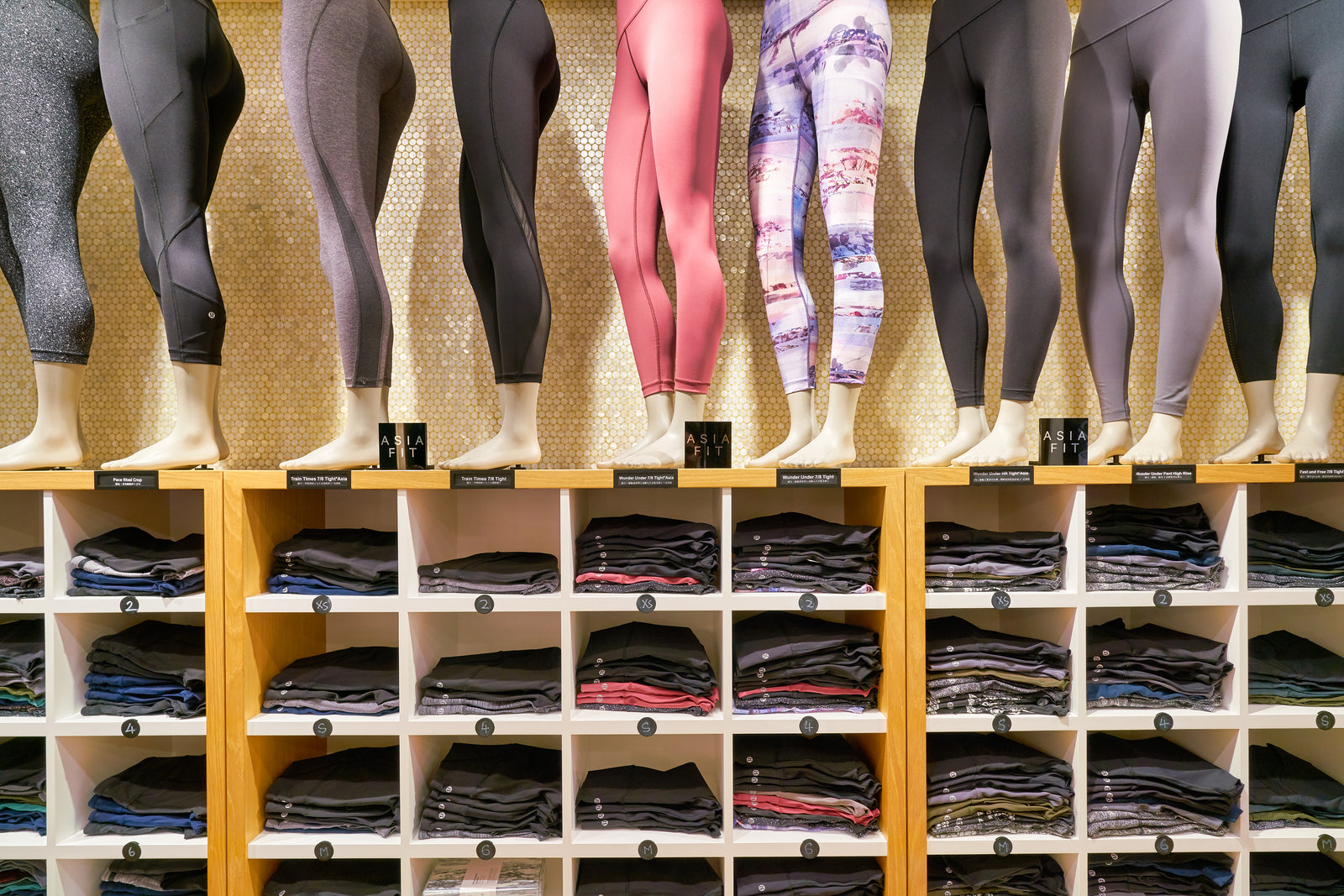Your Cart is Empty
ONE TREE PLANTED WITH EVERY ORDER
ONE TREE PLANTED WITH EVERY ORDER

4 min read
Could exercise be harming your health? That depends on what you're wearing! Yoga pants and gym leggings sold by Lululemon and other top sportswear brands contained toxic PFAS, according to testing done by consumer health activist body, Mamavation. In this blog we discuss: why this exploitation of consumer health has persisted; what the actual health risks are and their severity; as well as introducing the non-toxic alternative.
You might be wondering - If polyester is so harmful, then why is it used to make clothing? Well, this has only been the case for less than half a century. In the good old days, people wore only natural fabrics, such as silk, linen, wool and cotton. They also usually owned only a few outfits, due to the cost of these quality materials. In the 1950s, technological advancements led to the production of synthetic polymers. However, it wasn’t until the 70s and 80s that they gained popularity in the clothing and sportswear industry.
Today, almost all yoga and workout apparel sold by popular sportswear brands such Lululemon and Gym Shark are made from polyester or a similar synthetic material due to their durability and “sweat-wicking” properties but mainly because of cheap manufacturing costs, allowing maximisation of profits.
Since completely synthetic clothing had only been in use for a couple of decades prior, health concerns did not really arise until the end of the the last century. It has only been during the last decade or so that studies have been carried out looking into the effects of toxins in synthetics on the human body. The results of which are quite terrifying…
Speaking on the risk of chemical toxins, Erik Olson, Senior Strategic Director for the US Natural Resources Defence Council claims that there is a “tidal wave of research that’s been coming out fast and furious” He also states, “we’re getting past the phase of complete denial from the industry – they can no longer claim that there’s no risk”.
Synthetic sportswear is quickly becoming one of the latest global health concerns. Sports and exercise are more popular than ever, but could toxic sportswear become this century’s version of the smoking health crisis exposure in the last?
As the name suggest, synthetic materials are synthesized from chemicals. Polyester contains dyes, solvents, phthalates (plasticizing chemicals) and PFCs (polyfluorinated chemicals), which are now more commonly referred to as PFAs (per- and polyfluoroalkyl substances).
PFAs are pretty much indestructible and these “forever chemicals” are used in various industrial products, such as car wax! While they do an excellent job of making your car shiny, it turns out they’re not so good for the human body.
These lab-grown chemicals disrupt the skin’s natural microbiome leading to clogged pores, irritation, dermatitis and allergies.
However, the damaging effects are not limited to the skin. It is now known that these chemical toxins do in fact enter the blood, which is where the real danger occurs.
PFAs found in polyester have been associated with numerous health risks, including:- Birth defects
- Increased risk of miscarriage and infertility
- Abnormal thyroid
- Hormone disruption
- Weight gain
- Elevated cholesterol
- Inflammation of the liver
- Weakened immune systems
- Cancer
PFAS are also toxic at extremely low levels (i.e. parts per quadrillion), posing significant risks to our health.
The Mamavation study, carried out at an EPA certified laboratory tested for organic fluoride (a PFA indicator) and discovered a shocking 32 parts per million (ppm) in Lululemon Align Highrise Pants.
The full extent of the health risks is still unclear. However, previous lab research by the National Institute for Occupational Safety and Health found that PFAS skin exposure poses similar health risks as ingesting the chemicals via food or water.
Particularly with clothing, it is not just a one-off exposure risk but the long-term absorption into the body’s largest organ. As Alexandra McNair Quinn, a chemical sustainability consultant and founder of Fashion FWD, a non-profit educating consumers about toxic chemicals in clothes, said, “It’s not just that people are exposed to one on a regular day. It’s the accumulation of all of these exposures in a regular day that can be harmful".
Another chemical that is often added to polyester clothing is Formaldehyde, which helps prevent shrinking… That would be fab… if it wasn’t also a class three carcinogen that causes respiratory disease.
Can it get any worse? Yes. The problem is not only the toxins contained within synthetic material. It is also the environment that the fabrics create.
As polyester is processed from petroleum it has a low water permeability and therefore, does not absorb human sweat well. Likewise, it does not allow the body to breathe, which inhibits the natural heat transfer processes and air exchange. While many everyday garments also use these same man-made fibres, the health risks are magnified greatly with exercise. The combination of body heat, sweat and friction accelerate the absorption of the chemical toxins into the body.
Organisations such as Greenpeace are putting pressure on leading sports brands to reduce the amount of chemicals in their products. But in many countries, including the US, this practice is still largely unregulated and the multi-billion-dollar industry has been slow to react to this inconvenient truth.
Of course consumers want their clothes to look nice and perform well but above all they should be safe.
Sujatha Bergen, a coauthor of a recent NRDC report titled Going Out of Fashion: U.S. Apparel Manufacturers Must Eliminate PFAS “Forever Chemicals” from Their Supply Chains. points out that ,“we lived just fine without these chemicals before, and brands could phase them out quickly if they chose to”.
But can the performance benefits of sports apparel be achieved without the use of chemicals? Regular cotton and other natural materials are not a traditional choice for serious exercise as it is normally difficult to attain the much desired “sweat-wicking” properties. Rather, they tend to hold water, becoming heavy, clammy and uncomfortable.
Dojo Sportswear offers a ground-breaking new solution! Revolutionary textile engineering fuses a complex of natural minerals with the finest cotton cloth to create our unique patented fabric.
Dojo Yoga Leggings offer all the performance attributes of synthetics but not the toxins! Choose a new way. The way of nature.
Substituting chemical sweat-wicking technology for a health-conscious and eco-friendlily alternative is a fantastic start. However, Dojo Leggings do not only “replace” the synthetic options with a natural equivalent but in fact outperform them.
The organic nano composites provide additional health benefits. Our revolutionary fabric boasts odour-repelling, anti-bacterial and hypo-allergenic properties. Click here to read more about the revolutionary mineral-based technology.
Comments will be approved before showing up.

Use code SUPERNATURAL at checkout